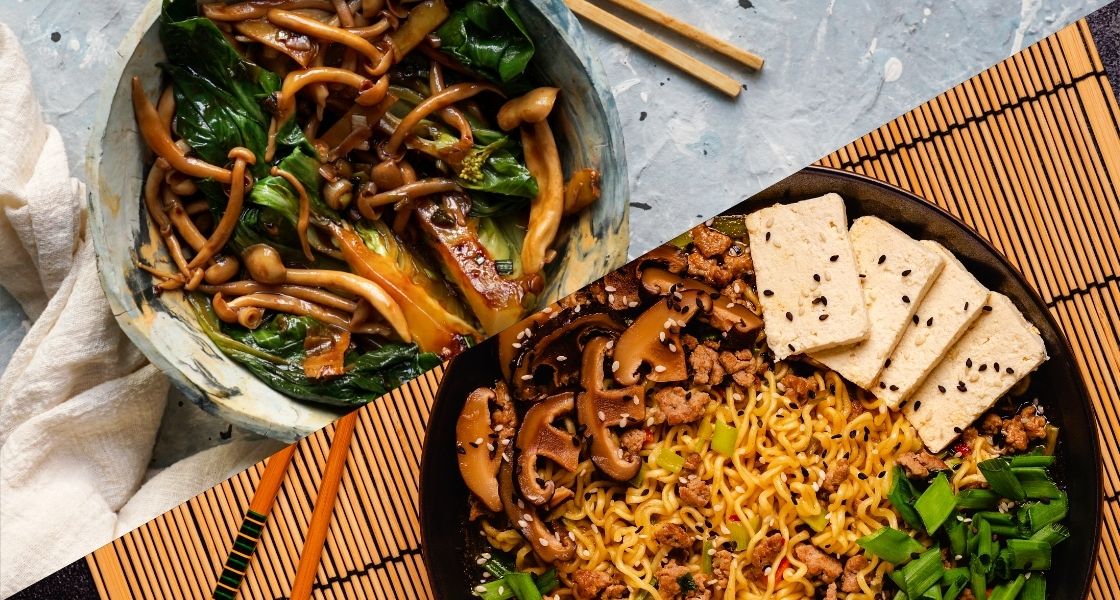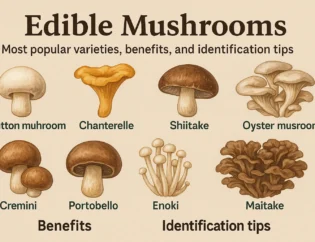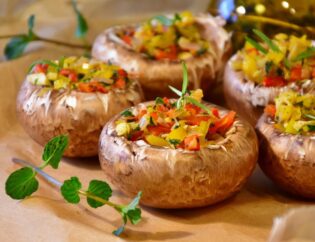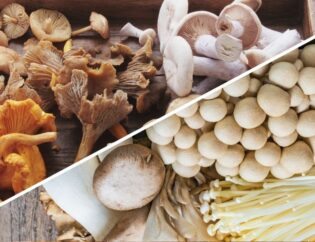
Korean mushrooms and Japanese mushrooms have long been staples in Asian cuisines, offering unique flavors and textures that elevate countless dishes. While both types are popular in their respective cultures, they bring different characteristics to the table. But which one is better suited for your kitchen? Let’s take a closer look at the differences between these two mushroom varieties and discover their culinary potential.
Korean mushrooms – types and varieties
Korean mushrooms are widely used in both traditional and modern Korean dishes, bringing earthy flavors and a distinct texture. Some of the most popular mushrooms in Korea include:
- Enoki mushrooms (Paengi-beoseot, 에노키버섯): Long, thin mushrooms with a mild flavor and crunchy texture.
- King oyster mushrooms (Saesongi-beoseot, 왕 느타리버섯): Known for their thick, meaty stems, these mushrooms have a subtle flavor that absorbs sauces well.
- Shiitake mushrooms (Pyogo-beoseot, 시이타케 버섯): With a rich umami flavor, they are often used dried and rehydrated for soups and stews.
- Wood ear mushrooms (Namu-beoseot, 목이버섯): Commonly used in stir-fries and soups for their unique, slightly chewy texture.
- Chanterelle mushrooms (Chanterelle-beoseot, 살구버섯): Less common but cherished for their delicate flavor and golden color.
Each of these mushrooms brings a unique texture and flavor to Korean dishes, making them a versatile choice for chefs and home cooks alike.
Japanese mushrooms – types and varieties
Japanese mushrooms are just as diverse and cherished in Japan, where they feature prominently in many dishes. Some key varieties include:
- Maitake mushrooms (舞茸): Also known as “hen of the woods,” these mushrooms have a strong, earthy flavor and a firm texture.
- Shiitake mushrooms (Shiitake-beoseot, 椎茸): Common in both Korea and Japan, their deep umami taste is essential in broths and stir-fries.
- Enoki mushrooms (エノキ茸_): Just like in Korea, enoki is used in Japan for its mild taste and crunchy texture in soups and hot pots.
- Nameko mushrooms (なめこ): Known for their small, brown caps and slippery texture, they add a unique element to miso soups and stir-fries.
- Matsutake mushrooms (松茸): Rare and highly prized, they have a distinct, spicy aroma and are often enjoyed grilled or in rice dishes.
These mushrooms are integral to many traditional Japanese recipes, offering a wide range of flavors and textures.
Popular Korean dishes with mushrooms
In Korean cuisine, mushrooms add depth and richness to a variety of dishes. Some of the most popular dishes featuring Korean mushrooms include:
- Bulgogi with mushrooms: Grilled marinated beef or pork served with sautéed mushrooms for extra flavor and texture.
- Bibimbap: A mixed rice dish topped with vegetables, mushrooms, meat, and a fried egg, often featuring king oyster mushrooms or shiitake mushrooms.
- Kimchi jjigae: A spicy kimchi stew often enriched with enoki or shiitake mushrooms for added umami.
- Japchae: Stir-fried sweet potato noodles with vegetables and wood ear mushrooms.
These dishes showcase how Korean mushrooms can enhance the flavor and texture of a meal, making them a key ingredient in Korean cooking.
Popular Japanese dishes with mushrooms
Similarly, Japanese mushrooms are key ingredients in a range of traditional dishes:
- Nabe (hot pot): A popular winter dish where enoki, shiitake, and maitake mushrooms are simmered with vegetables, tofu, and meat in a rich broth.
- Miso soup: A daily staple in Japan, often made with shiitake or nameko mushrooms for extra flavor.
- Tempura mushrooms: Maitake and shiitake mushrooms are often battered and fried, creating a light, crispy appetizer.
- Takikomi gohan: A rice dish cooked with soy sauce, vegetables, and matsutake mushrooms, prized for their distinct flavor.
These dishes highlight the versatility of Japanese mushrooms, which bring unique flavors to Japanese cuisine.
Comparison: Korean mushrooms vs Japanese mushrooms
When deciding between Korean mushrooms and Japanese mushrooms, it’s important to consider factors like flavor, texture, and culinary use. Below is a comparison table that outlines the key differences between these two types of mushrooms:
| Feature | Korean Mushrooms | Japanese Mushrooms |
| Variety | Enoki, king oyster, shiitake, wood ear | Maitake, shiitake, enoki, nameko, matsutake |
| Flavor | Earthy, mild to robust umami | Earthy, umami-rich, some varieties spicy |
| Texture | Chewy, meaty, or crunchy | Firm, slippery, or crunchy |
| Popular Uses | Stir-fries, soups, stews, BBQ, rice dishes | Hot pots, soups, tempura, rice dishes |
| Availability | Widely available in both fresh and dried forms | Some varieties are seasonal and rare |
As the table shows, both Korean mushrooms and Japanese mushrooms have their own unique qualities, from the variety of flavors to their use in different types of dishes. Your choice will depend on the specific flavors and textures you prefer in your cooking.
Choosing the best mushrooms – trust Anslaw
Whether you prefer the delicate taste of Korean mushrooms or the bold flavors of Japanese mushrooms, selecting high-quality mushrooms is key to getting the best results in your kitchen. It’s essential to buy from trusted suppliers to ensure freshness and quality. At Anslaw, we specialize in providing a wide range of mushrooms, including Korean mushrooms, as Mix Exotic mushrooms to suit all your culinary needs. With a focus on quality and freshness, we guarantee the best mushrooms for your kitchen.








